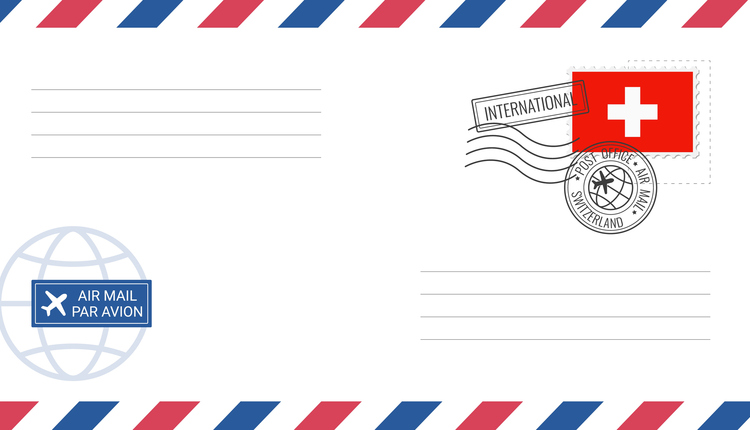If you’re working at home rather than your usual office (and many of us are), you’re checking your home mailbox and getting less than usual. As for your usual office mail, it might be reaching you with some delay, or it might be sitting in the mail center or your office, or it might be recycled, depending on your company and the mail piece.
I started thinking about whether B-to-B mail was getting through because my company, WorldVu, would normally be promoting our updated Guide to Worldwide Postal-Code and Address Formats now. So, as a researcher and a writer, I started asking questions and looking for answers about whether B-to-B mail is reaching the individual addressee. Many, but not all of those, I asked are in the mailing, printing, and logistic industries in some way; all are in the US.
For mailers, the issue is whether mailed items are reaching the intended recipient. This will depend on what you’re sending, how it’s addressed, and to whom. Periodicals and other larger or lengthy items and marketing mail are particularly problematic. Here’s what I found.
Mail continues to be delivered to and processed by organizations of all sizes, but not all mail is reaching the employees to whom it is addressed. The USPS delivery obligation is met when the mail is delivered to an organization’s office or post office box address when the mail is addressed using the organization’s name. That is, the addressee is not the named individual but the named organization. Once the mail is delivered to the organization, it’s up to that organization to determine what is done with it. Of course, organizations want mail to reach employees so that they can do their jobs, but organizations have varying opinions about what mail needs to reach the employees.
Not all inbound mail addressed to employees working remotely in “normal” times or during the current crisis reaches them. Regular letters that can be scanned and forwarded via email are most likely to reach the intended recipient. Some postcards that pass the organization’s filtering process may also be scanned and forwarded. High-value or accountable items, like certified, registered or express delivery pieces, require special handling. They are often opened and scanned immediately, and also sometimes forwarded to the remote employee by an overnight delivery service. The items less likely to be forwarded are marketing pieces and lengthier items like catalogs and periodicals, which are disposed of if they are not forwarded.
For the most part, companies of any size that had staff working remotely prior to the current COVID-19 crisis had the best developed policies. Those that depended on clerical staff in the same departments or organizational units to handle the forwarding of inbound mail and the sending of outbound mail have been challenged by the lack of staff with current stay-at-home orders. Organizations that outsource their mail center operations to a provider of mail services have a contract that includes a Statement of Work (SOW), detailing how various items of mail will be handled. During this current crisis, some modifications to these were required, since mail that would have been delivered to internally must now be handled in a different way. This has required a modification of the SOW with each organization.
Very small companies with, say, fewer than 10 or 12 employees, are handling their mail more simply. Often, someone is assigned to pick up the mail and then either handle anything that needs attention or pass it on to another employee who can. Outbound mail is handled by the responsible employee(s), who keep a record of expenses. When companies of this size have remote employees in “normal” times, the arrangements for both inbound and outbound mail is handled with the same diversity as with larger organizations.
Surprisingly, some organizations had no particular policies, leaving it up to the clerical staff to decide what is and is not forwarded or accepting the recommendations of a mail center service provider with minimal review. Given that many of the organizations surveyed are in the broader mailing industry, this was unexpected.
Business mail sent directly to remote offices is banned by some organizations. (A recent webinar suggested this was a good practice.) Others encourage employees to use an address local to them. This may be their home address or a rented box address at the post office or a private service. The drawbacks of having mail go to another address — what happens when the employee leaves or if more general organizational mail is sent to that address? — must be weighed against the advantages of the employee directly receiving their business mail, eliminating the need to sort and forward mail to them.
Outbound mail from employees working remotely is handled in many different ways during this crisis, from simply mailing it at the local post office to using an application that creates one or more mail pieces that are then mailed with other organizational mail in accordance with ordinary procedures, or whatever has replaced them during this crisis.
For all organizations with remote workers now or in normal times, how mail to them is handled is important for ensuring efficient operations. Procedures should be well-thought out and regularly reviewed. (Those periodicals and marketing mail keep staff informed about what’s happening and about products and services.) As we’ve all discovered recently, they should be part of disaster planning and need to be subject to very quick implementation. It is equally important to plan procedures for outbound mail from remote employees to control costs and ensure those employees are able to efficiently send any items that must be sent.
Getting back to my original reason for looking into all this, our promotional mailing for the Guide to Worldwide Postal-Code and Address Formats will likely go out in June and again in September. Like most small businesses, we can’t afford to stop all promotions, but we also cannot afford to send promotions that don’t arrive at the intended recipient.
Merry Law is President of WorldVu LLC and the editor of Guide to Worldwide Postal-Code and Address Formats. She is a member of the UPU’s Addressing Work Group and of the U.S. International Postal and Delivery Services Federal Advisory Committee.















